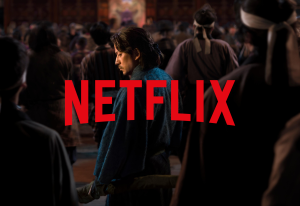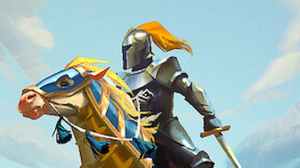Much has been made in the last couple years about the differences between practical and computer generated effects. The blowback came primarily from the use of the latter in films like the Star Wars prequels and Avatar, where it seemed like around every corner was another digital effect, whether it was a character, environment, ship, or object.
Videos by ComicBook.com
When J.J. Abrams and company began work on Star Wars: The Force Awakens, it was almost a battle cry: “practical effects!” The same can be said for the follow-up, Rogue One: A Star Wars Story, which is now in theaters. There was talk of realism, several major on-location shoots, and even stories (and sizzle reels) of entire physical ships being built and hung by cranes over the heads of the actors as they ran through beach-front action sequences.
To the layman, then, it may sound surprising that Rogue One clocks in with a bit more than 1600 visual effects, according to a report by Wired. Visual effects (VFX) shots entail more than just full CGI, though – they’re often used to tighten up shots, add a sense of realism to the effect of an explosion or a gunshot, or to supplement an existing practical effect. Can’t get the level of expression you need out of that mask? A VFX supplement can help, for instance.
Here we’ll take a look at other major franchises like Star Trek, Harry Potter, the DC Films universe, Marvel Cinematic Universe, Transformers, and more, and see how Rogue One (and The Force Awakens) stacks up amongst the most bombastic franchises in Hollywood.
Statistics and VFX tracking provided by UpcomingVFXMovies.com.

Transformers Franchise
In a movie literally starring giant transforming robots, featuring major battles between them, you might think this would be at the top of the modern VFX list. The number of VFX shots in the Transformers movies, though, are surprisingly low. Like most movies on this list, Industrial Light & Magic (ILM) did the bulk of the work here, with Digital Domain, Atomoic Ficio, and Method Studios contributing on various films.
The most recent, Transformers: Age of Extinction, which introduced the Dino-bots, only had around 600 VFX shots. The first Transformers clocked in around 630, Revenge of the Fallen had 800, and only Dark of the Moon popped (just) over 1000.

Star Trek (Modern Franchise)
When Star Trek came back into theaters to once again explore strange new worlds (and new VFX styles), it did so with about 1005 shots, mostly from ILM, with about a third from Digital Domain. The second film, however, skyrocketed, with over 1800 VFX shots (ILM, Pixomondo) and over two years of work put into making Into Darkness fly. Thinking about the two films, you may remember the time travel, the elaborate future ship, and more from the first; the second’s only massive scene being the crash into Starfleet, but it made all the difference.
The third film, released this summer, Star Trek Beyond, dialed it back once more, with about 1450 shots. It was done primarily by Double Negative, Atomic Fiction, and RodeoFX.

Harry Potter Franchise
There were approximately 1600 VFX shots (dead-on with Rogue One) done for Fantastic Beasts and Where to Find Them (Double Negative, Cinesite, Framestore, and more), a movie that included magical creatures in nearly every shot in the film, plus various strange worlds, major spells, teleportation, and more including having to recreate an entire era. That puts it at the very top of the Harry Potter franchise, which previously had a record of 1400 from Order of the Phoenix.
Deathly Hallows part 2 with its major end-game battle had around 1200, but the much tamer first half had only 600, so this franchise is all over the place with regards to VFX shots.

Batman v Superman: Dawn of Justice (And DC Films)
Batman v Superman, with effects by Weta Digital, MPC, Double Negative, and ScanlineVFX, came in under Rogue One. Yes, that all CGI Doomsday, the major battles, and flying/heat vision/etc effects only came to 1500 VFX shots. It clocked in just under Man of Steel, in fact (also betwween 1500-1550, the most ever for any DC Comics based movie).
Perhaps surprising is Suicide Squad, whose grounded characters and practical creatures for canon fodder allowed for a significant decrease in VFX use – only around 650 shots were done for the film, from MPC and Sony Imageworks. We’re guessing about 350 of those were for the final battle.

The Hobbit (and Lord of the Rings) Franchise
The first Hobbit movie set a new record for the broader Lord of the Rings franchise with 2135 effects, led by Weta Digital. The subsequent Hobbit films came in less each time, at 2000, and 1836. The older trilogy had 1500 for Return of the King, 800 for The Two Towers, and a measly 480 for Fellowship, so it’s clear the earlier films got the job done with a lot less on the back end.

Star Wars: The Force Awakens
The vaunted return to practical effects… also included a ton of visual effects. At 2100, The Force Awakens came very close to hitting the prequels in terms of VFX; it’s just that more of those shots were done to supplement practical effects, so it’s not quite as obvious. ILM, BaseFX & Hybride led the way, with Kelvin Optical picking up some slack.

The Star Wars Prequels
Ah, the big breaking point: The Prequel trilogy of Star Wars. Well, they weren’t really all that much higher than The Force Awakens, with Attack of the Clones and Revenge of the Sith hitting about 2200 shots each, all from ILM. The Phantom Menace actually came in under TFA, at 1950 VFX shots (all ILM again). What this should serve to illustrate is the way teams at ILM and others have found the ability to supplement a lot more of practical, marrying the two concepts together, rather than relying fully on one or the other, bringing a new sense of realism to these worlds of the fantastic.

Avatar
Known as a visual power house, Avatar has 2500 effects, from Weta, ILM, and Framestore. The VFX teams were responsible for creating nearly the entire world of Pandora, all the characters in the at world, the vehicles and creatures, and more. They also created it all with 3D in mind, adding another layer to the process from the start. it’s not, however, the most shots in a Hollywood movie.

Doctor Strange (and other Marvel Cinematic Universe Films)
Doctor Strange may come across as being VFX heavy, but apparently they were just really good at what they did. Despite world-bending, time-rewinding, and other dimensions, the movie only had around 1450 VFX shots, from ILM, Method, Framestore, Lola, and Luma.
In comparison, Avengers hit 2200, Captain America: Winter Soldier 2500, Guardians of the Galaxy 2750, and Captain America: Civil War at 3000 (with no less than 12 teams putting in work on that one!). But that still wasn’t the record – though it is held by Marvel Studios.

Avengers: Age of Ultron
The Hollywood record for most visual effects sequences is Avengers: Age of Ultron, pulling in just over 3,000 VFX shots and nudging Civil War out. ILM, Double Negative, Luma, Method, Animal Logic, and Lola teamed for the film, which had to fly an entire city high above the Earth, bring hundreds of Ultron robots to life, and produce the bombastic superpowers of The Vision, Thor, Scarlet Witch, Iron Man, and more to the big screen.
It should be noted, however, that is not the overall record. That’s held by Baahubali: The Beginning, a 2015 Indian film with an outrageous 4500 VFX shots done by 600 artists at 17 different studios. While it had human actors, reports say it was otherwise 90% CGI, so it almost doesn’t count. Two other Indian films have had more than 3500 shots, though.









